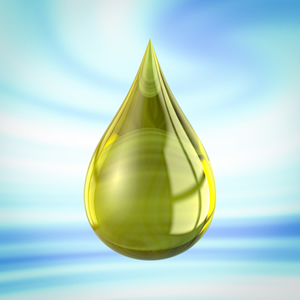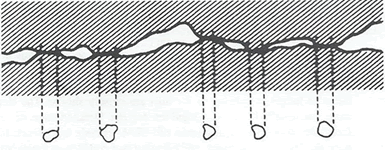Connector Contact Lubricants
Connector contact lubricants can reduce mating forces and contact wear, and there are lubricants to do just that. But the real goal is to get more than just friction/wear reduction from a lubricant.
 For many of us the first thing that comes to mind when the word “lubricant” comes up is “slippery stuff,” motor oil, WD40, or silicone grease, none of which are appropriate for connectors.
For many of us the first thing that comes to mind when the word “lubricant” comes up is “slippery stuff,” motor oil, WD40, or silicone grease, none of which are appropriate for connectors.
Basic Contact Finish Types
You will recall the two basic types of contact finishes used in connectors: Noble, epitomized by gold/nickel plating; and non-noble, epitomized by tin finishes, whether plated or applied by controlled exposure to a liquid metal source such as Hot Air Leveled Tin (HALT). As would be expected, the requirements on the lubricant and the benefits to be realized from the lubricant, and, therefore, the formulation of the lubricant, are different for noble and non-noble applications.
Gold finishes are typically used in connectors intended for more demanding applications, such as those requiring high performance/reliability or high pin counts. High performance/reliability requires low and stable contact resistance, while high pin counts require low and controlled mating forces. Contact lubricants in such cases must provide corrosion protection for resistance stability and reduced friction for reduced connector mating forces. As a “stake in the ground” bit of info, the coefficients of friction for gold and tin finishes are in the range of 0.3 and 0.7, respectively. Lubricated connectors can be in the range of 0.1, a significant reduction that is the source of the reduced mating force and wear rates.
Types of Corrosion
On the corrosion side, the corrosion source in gold- or nickel-plated connectors is the copper alloy spring materials, which are susceptible to a number of corrosion mechanisms. The contact lubricant can provide a protective layer over pore sites in the plating and exposed copper alloy in the vicinity of the contact area. Pores, small defects in the plating which decrease in number as the plating thickness increases, may have exposed copper at their base. Some connectors are pre-plated, meaning the gold over nickel is applied to the plug and receptacle contacts prior to the final stamping operation. This results in bare copper alloy edges near the mated contact area.
Tin finishes are susceptible to a different corrosion mechanism, “fretting” corrosion. Fretting refers to small-scale motions, fractions of a micron to a few microns, which occur due to mechanical (vibration/shock) or thermal (thermal expansion mismatch) driving forces. The corrosion is the build-up of tin oxide wear debris at the contact interface due to the fretting motions. The build-up of wear debris results in an increase in the contact resistance with time, the rate of increase depending on the number of fretting motions that occur.
Fretting corrosion degradation can lead to high resistances in as few as a few thousand events. The prime purpose of the contact lubricant in tin-finish applications is to reduce the potential for fretting corrosion. The contact lubricant may perform this function in two ways: By providing a protective layer to reduce the potential for corrosion and by reducing the wear that occurs on each fretting cycle (and, therefore, the amount of wear debris that becomes susceptible to oxidation).
For completeness, I must note that gold flash over nickel finishes (gold plating thicknesses in the range of 0.1 microns) becomes susceptible to fretting corrosion degradation when the gold flash is worn through, exposing the nickel underplate which is susceptible to fretting corrosion.
Non-conductive Lubricants
In practice, a contact lubricant may be liberally applied to the conductor and, therefore, must be non-conductive. How is the required metal-to-metal contact interface created under this condition? During the mating process, the plug contact slides over the receptacle contact and the contact lubricant provides a layer that reduces the coefficient of friction and the wear process, which gives the desired reduction in mating force and wear. When the plug comes to rest at the mating area of the receptacle, the contact lubricant is displaced, as the two surfaces deform against one another to create the desired metal-to-metal interfaces.
The figure below shows the structure of a contact interface on a microscale. On this scale, all surfaces are rough and the surface deformation takes place only at the high spots on the surface that happen to be proximate to one another. The amount of actual metallic contact area created is generally of the order of a few percent. The remainder of the surface consists of valleys which can accommodate the displaced contact lubricant. The valleys are interconnected, which means that the individual metal-to-metal contact areas are effectively sealed off from the external environment by the contact lubricant. This provides the desired corrosion protection in both gold- and tin-finished connectors.

As noted, lubricant formulations are different for gold and tin finishes. Gold lubricants are often perfluoropolyether- (PFPE) or polyphenylether- (PPE) based. Tin lubricants are generally hydrocarbon-based. These fundamentally different bases have different characteristics with respect to temperature capability and environmental stability.
Both high and low temperature exposures must be considered. High temperatures influence the degradation and evaporation rates of the base materials. High temperature capabilities range from 120° to 250°C. PFPE bases have an issue at temperatures below 20°C where they begin to gel or solidify. Despite this concern, PFPEs have been used successfully in automotive applications for several years.
Some additional thoughts:
- An often-expressed comment is that “lubricants attract dust.” Clearly lubricants cannot attract dust, but some may tend to retain dust. It is not clear whether “free” or “retained” dust is more detrimental to performance.
- Connectors are available pre-lubricated, but in some cases the lubricant may be applied during product assembly. In such cases, the lubricant is an extra assembly step and questions of presence and quantity of lubricant on the connector may arise.
- Some lubricants are silicone-based and are not recommended for connector applications due to high volatility. Silicone films may deposit on contact faces and cases of silicone transformation to silica and silicon oxide have been reported, where silica particles have interfered with relay performance — not likely in connectors but why take the chance?
My personal opinion is that an inadequate connector design, for example, a connector that has inadequate contact force or plating thickness, cannot be “saved” by a contact lubricant. Selection of an appropriate contact lubricant*, however, can certainly enhance the performance capability and reliability of a properly designed connector, especially in harsh chemical environments.
*Details on formulations and application methods are available from lubricant suppliers.
[hr]
Spring Connector Fundamentals and
Power Connector/Contact Fundamentals Seminars
Attleboro, MA – April 28 – May 1, 2014
“The more you understand what goes into your connector,
the more you can expect to get out of it.”
Connector Supplier’s resident guru, Dr. Bob (Mroczkowski) and his company, connNtext Associates, along with Tom Peel, president and owner of Contech Research, will hold their spring seminars April 28 through May 1.
Connector Fundamentals Seminar, presented by Dr. Bob Mroczkowski and Tom Peel, April 28 and 29.
Power Seminar, presented by Dr. Bob Mroczkowski, April 30 and May 1.
The seminars cover a wide range of connector and contact-related topics such as design, materials, testing, and more. These events, ideal for both new and experienced engineers, are held at the Colonel Blackinton Inn in Attleboro, Mass. If there are any questions regarding the seminars, please feel free to contact either Tom Peel or Dr. Bob.
- Nanocrystalline Silver Alloy Contact Finishes in Electronic Applications - April 6, 2015
- Nanocrystalline Silver Contact Platings - March 16, 2015
- Dr. Bob on Gold Flash Contact Finishes (and Max Peel) - September 22, 2014






